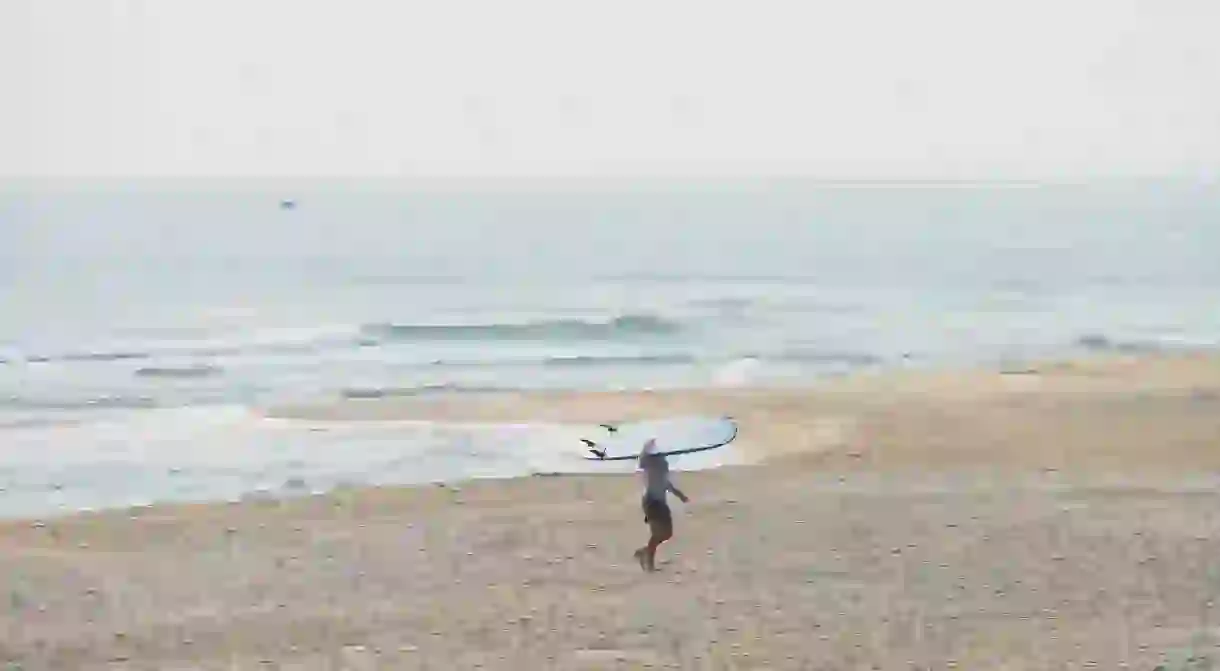The 7 Best Places to Go Surfing in Vietnam

If you’ve seen Apocalypse Now (1979), you’ll know that you can surf in Vietnam – and how! The country has 3,000km (1,800mi) of beautiful coastline, and terrific waves, the best of which are found as you head down the South Central Coast. Ready to board? Here are the best places to go surfing in Vietnam.
Da Nang, for the all-around best surfing
Architectural Landmark

Nha Trang, for swells for all levels
Natural Feature, Architectural Landmark

Mui Ne, for kitesurfing
Natural Feature, Architectural Landmark

Vung Tau, for easy access from Ho Chi Minh City
Architectural Landmark, Natural Feature

Bình An, Hue, for beginner surfers
Natural Feature

Built around the crumbling Forbidden Purple City of the ancient Nguyen dynasty, and set on the banks of the Perfume River, Hue is a Vietnam must-see. The surrounding countryside is dotted with ancient temples and tombs, many of them set in scented, bird-filled gardens. Golden beaches run south from here, many of them known to few tourists. The fishing village of Bình An stands on a long, curving bay of sand between a forest-covered cape and the mouth of the vast Dam Cau Hai lagoon. With gentle waves suitable for surfers still struggling to stand, it’s a beginner’s beach to practise on before heading over the mountains, to the bigger breaks around Danang, some 40 minutes away. The water is warm enough to enter without a wetsuit outside the peak domestic tourism season (late July to late August), and the beach is usually empty. It rains heavily here between September and December.
Cửa Đại, Hoi An, for its location near the city
Architectural Landmark

Lăng Cô, Danang, for a quiet surfing getaway
Architectural Landmark

When the Americans landed at China Beach at the beginning of the Vietnam War, there was nothing here. Now there’s a city: Danang. Cable cars ferry thousands of tourists daily into the formerly wild, forested mountains, now home to a Disney-style resort devoted to Vietnamese culture – you may have seen its famous Golden Bridge held between giant outstretched hands. Corporate towers cluster the city centre and legions of resort hotels line the sand. Lăng Cô is a few kilometres north, but it’s separated from the hurly-burly by a mountain ridge. For the moment it’s relatively free of big development. And the beach is gorgeous, as wide as a football field, and stretching for some 10km (6mi) between a sheltered lagoon and the open sea. The sand is silk-soft and cotton-white. Waves vary depending on the swell, but can be massive in the late summer and winter when storms hit the South China Sea.
The Best Trips and Tours in Vietnam
Natural Feature

Vietnam has many amazing charms, including its bustling vivacious cities, its magnificent natural landscapes and its wonderfully welcoming locals. From the buzzing streets of Ho Chi Minh City to the placid shores of Phu Quoc island, there’s so much to see and do – and these tours and trips will help you make the most of your visit to this stunning country.
Alex Robinson contributed additional reporting to this article.













